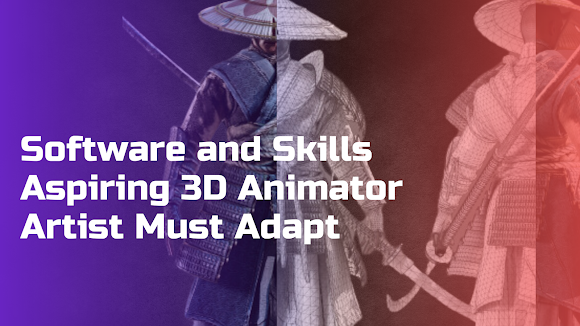Which Softwares and Skills Aspiring 3D Animation Artist Must Learn:
The world of 3D animation is a captivating realm where creativity meets technology, bringing virtual worlds to life. To embark on a successful journey in 3D animation, mastering the right software and honing essential skills is crucial. Let's delve into the deep intricacies of the tools and expertise that define a proficient 3D animator.
1. Software Proficiency:
Maya is a comprehensive 3D animation software widely regarded as an industry standard. It offers a robust set of modeling, texturing, rigging, and animation tools, making it indispensable for aspiring 3D animators.
Blender has gained popularity as a powerful open-source alternative for its versatility and freedom. It boasts features for 3D modeling, sculpting, animation, and even video editing, making it an attractive choice for artists on a budget.
Known for its user-friendly interface, Cinema 4D is favored for motion graphics and visual effects. It excels in procedural modeling and has a powerful animation toolset, making it an excellent choice for artists looking for efficiency.
Particularly valued in the gaming and architectural visualization industries, 3ds Max is a go-to software for modeling and animation. Its flexibility and compatibility with other Autodesk products make it a staple in many professional workflows.
2. Key Animation Skills:
- Character Animation:
Mastering the art of bringing characters to life is at the core of 3D animation. Understanding timing, spacing, and weight is crucial for creating believable and expressive character animations.
- Rigging:
Rigging involves creating a digital skeleton for characters or objects, allowing animators to manipulate them realistically. A strong grasp of rigging is essential for crafting fluid and dynamic animations.
- Modeling and Texturing:
The ability to create 3D models and apply realistic textures is fundamental. 3D animators must often model characters, environments, or props and then texture them to achieve a visually appealing and cohesive look.
- Understanding Physics and Motion:
An in-depth knowledge of physics and motion is vital for creating authentic animations. This includes understanding how objects move, react to forces, and interact with their environment.
3. Continuous Learning and Adaptability:
- Stay Updated on Industry Trends:
The field of 3D animation is dynamic, with constant technological advancements. Staying informed about industry trends, software updates, and emerging techniques is crucial for remaining competitive.
- Portfolio Building:
A strong portfolio showcasing various projects is essential for landing opportunities in the 3D animation industry. Regularly updating and expanding your portfolio demonstrates growth and proficiency to potential employers.
- Networking:
Building connections within the animation community can open doors to collaborations and job opportunities. Attend industry events, join online forums, and engage with professionals to broaden your network.
Conclusion:
Becoming a proficient 3D animator is a journey that requires a combination of technical expertise, artistic sensibility, and a commitment to continuous learning. By mastering essential software and honing key skills, aspiring animators can unlock the door to a world where imagination knows no bounds.

Comments
Post a Comment